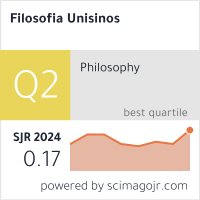For a cartography of collective power equipment at the end of the 20th century in Colombia
An analysis from Félix Guattari
DOI:
https://doi.org/10.4013/fsu.2025.263.08Keywords:
Modes of semiotization, modes of subjectivation, collective Equipment of power, Félix Guattari.Abstract
The text draws a cartography of some collective power equipment at the end of the 20th century and the beginning of the 21st century in Colombia from some assumptions of the analytical work of Félix Guattari in the seventies. This is based on the identification of the modes of semiotization, the forms of subjectivation and the social practices that these Facilities produced and modulated in the territory. To achieve this objective, three moments are established. Initially, the Guattarian understanding of Collective power equipment is characterized in the context of the research carried out by the group of the Center for Institutional Studies, Research and Training (CERFI) and the magazine Recherches. Subsequently, some social practices, modes of semiotization and subjectivation are characterized, especially linked to the armed conflict and the neoliberal economic, political and social management that the country has experienced since the late 1980s. Furthermore, the existence of sign machines such as radio, television and the Internet and the machinic subjectivity that they produce are analyzed. Finally, the legal, conservatist, war, clientelism and corruption facilities are pointed out, their productive-semiotic-libidinal function and how this was contested by the function of collective agency in the last decade.
Downloads
Metrics
Downloads
Published
How to Cite
Issue
Section
License
Copyright (c) 2025 Nelson Fernando Roberto Alba

This work is licensed under a Creative Commons Attribution 4.0 International License.
I grant the Filosofia Unisinos – Unisinos Journal of Philosophy the first publication of my article, licensed under Creative Commons Attribution license 4.0 (which allows sharing of work, recognition of authorship and initial publication in this journal).
I confirm that my article is not being submitted to another publication and has not been published in its entirely on another journal. I take full responsibility for its originality and I will also claim responsibility for charges from claims by third parties concerning the authorship of the article.










